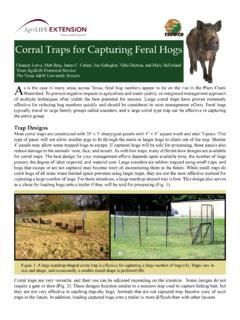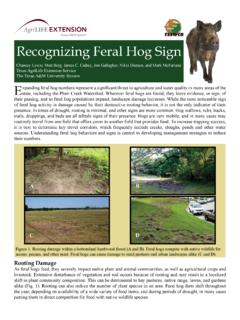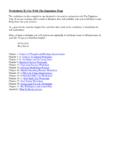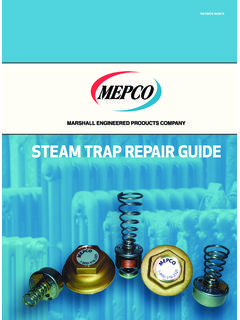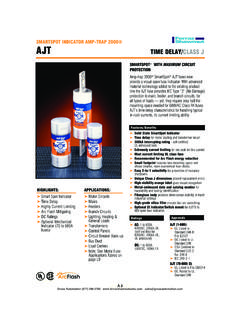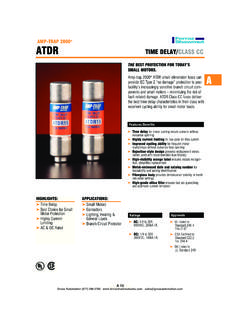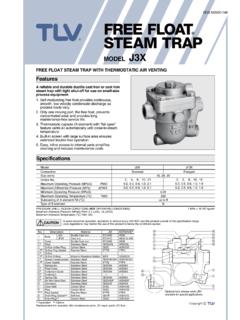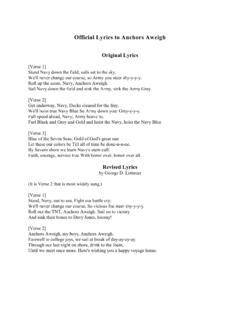Transcription of Selecting a Manual Gate Trigger for Wild Pig …
1 Selecting a Manual gate Trigger for wild Pig Trapping Billy Higginbotham Professor and Extension Wildlife and Fisheries Specialist Texas A&M AgriLife Extension Service Lots of information is out there on trap designs and gates that can be used in the War on wild Pigs. But when it comes to triggers notsomuch! There are triggers that simply close the door and there are triggers that can be a bit more selective. Although not the focus of this article on Manual triggers , there are at least five companies that offer remote Trigger technology that allows for the trap to be tripped remotely by phone or by sending a text message or email! Talk about selective! I am all for someone availing themselves to this technology if they desire to do so. However, in my mind and based on over 30 years of experience the only practice that matters is the one that is adopted Therefore, for many landowners the cost associated with these modern marvels may be a prohibitive factor.
2 Everything you read here has been tested by me personally I just don't recommend anything associated with pig trapping unless I know that it works! Furthermore, I love to look at everyone's home-made pig traps! Every trap seems to be a little different but I always learn something from the new design or Trigger / gate mechanism that I can pass on to landowners to give them an additional edge when it comes to trapping, which to me is the method that is the first line of defense against marauding wild pigs. First and foremost, some words about scent control, traps, pre-baiting, trail cameras and Trigger locations. You cannot beat a pig's nose-take precautions when you are at an active bait or trap site and minimize the scent you leave behind. As for traps, I prefer tear-drop shaped corral traps (to allow pigs to be more easily loaded into a trailer for transport to a buying station).
3 Over box traps and will not construct a corral trap with less than about 80' of perimeter. Five foot high panels using 4 x 4 mesh and 16' or 20' long supported by 6 ' t-posts placed every 4'-5' around the perimeter are standard. Anywhere from two to five additional panels are added if the sounder is large say 25 to 30 pigs or more. The idea is: As the number of pigs photo- captured at the bait/trap site increases, the distance from the gate opening to the Trigger should also increase-which means building larger traps. You simply cannot trap what you cannot bait, so always get the pigs on bait before erecting a trap. In addition, a camera will aid in determining when pigs are on bait and is essential to me in determining how large your trap should be based on pig sounder size. I simply would not attempt to trap pigs without a camera!
4 You must pre-bait pigs and then allow them to gain confidence in entering a trap long before you are ready to set the trap gate to catch. I also prefer for the Manual triggering mechanism to be located toward the back of the trap. I want as many pigs as possible inside the trap before the Trigger is tripped allowing the gate to close. Whenever you are dealing with wild pigs, regardless of sounder size, baiting strategy (both pre- baiting and during the capture phase) is awfully important. So, in order to achieve your objective, you might want to also read the Baiting article that accompanies this one. There are basically six types of Manual wild pig trap triggers , seven if you count the no- Trigger - at-all version! Of course, there may be some additional triggers in use out there that I. am unaware of, given that pig trappers are such an ingenious lot!
5 But for our purposes here, let's go through those I have used and I will give you my take on each one: 1) No Trigger -This design features a throat where two panels come together and relies on the memory of the metal in the panels to close or spring back or at least narrow once a pig pushes through only after being trained to enter the wired-open throat during the pre-baiting process. There are several variations of this trap design including the Wexford, Figure 6 or Figure 9 trap. While this trap design cuts cost by eliminating a formal gate and employs no Trigger , I think there are a couple of drawbacks. I have captured many pigs up to about 100 pounds in this design, which may make up most of the population out there. This of course requires a pre-baiting period with the throat of the trap wired open to ease the training process.
6 However, I. have great difficulty training large adults-- be they sows or boars to push in this design once it is set to capture. I know this because I have employed multiple cameras at many trap sites: One camera facing into the throat to record what goes in and a second camera to capture what is showing up to eat bait on the outside but refuses to go inside. I also have video of large boars eating bait up to the push in point but refusing to enter the trap itself. I even have video of small pigs opening the panels and exiting the trap, although this could be due to a design flaw on my part . The bottom line is big pigs just don't like tight spots and the necessity to push two panels apart to enter the trap results in capturing a percentage of the pigs showing up, but in my experience not all of them! If you are unsure, hang an extra camera to monitor who may be showing up for the party but doesn't have a ticket to get inside!
7 The Wexford (left) and Figure 6 or 9 trap (right) designs feature no gate or Trigger and have accounted for many pigs removed from the landscape. Pre-baiting a wired open Figure 6 or 9 trap. 2) Pressure Plate Trigger - This Trigger trips when the pigs step on a pan or plate much like a steel trap. Some of these plates are designed so the pressure can be adjusted somewhat to prevent the weight of smaller pigs from tripping the Trigger and closing the gate . However, I found that pigs don't really like stepping on these various shapes and sizes of pans because of their solid surfaces, therefore I stopped using them years ago. Sorry, no photo available. 3) Trough Trigger -This Trigger was originally deployed in the smaller box traps that began appearing in the early 1980's on the front end of the population explosion of wild pigs in Texas.
8 It is deployed by moving or pushing up or down on a trough filled with bait. It is effective but can often be deployed by smaller pigs the ones most likely to enter the trap first. The adults are often still outside when the gate is tripped making it the least discriminant of the triggers discussed here. Movement of the trough triggers the gate to close via a tripwire connecting the two together. 4) Tripwire Trigger -The tripwire Trigger simply is a length of wire, cable or other line that the pigs encounter while foraging for the bait and cause the gate to trip and close. I often use plastic-coated clothesline as the main tripwire but make a leader (think fishing) out of braided saltwater fishing line of at least 60 pounds test in the critical area where pigs will encounter the tripwire. The braid does not stretch like monofilament line and its small diameter and dark color make it difficult for pigs to detect.
9 Educated pigs can often avoid tripwires if they are made exclusively out of heavier material such as the aforementioned plastic-coated clothesline. Do I sound like I'm paranoid? You bet I am the boar in the photo below crossed the heavy tripwire 8 times in a 20 minute span before he finally tripped it-he simply knew it was there! The tripwire should be run above hog height from the gate along a series of t- posts to about of the way to the back of the trap where it is then angled down and run 12 high and parallel to the ground over about a 5' to 10' distance where it is then attached to the back of the trap. If baiting is done properly, the sounder of pigs should feed their way to the back of the trap to ensure more of the pigs are inside when the bait placed along the tripwire is consumed and the trap tripped. Smaller pigs can be prevented from tripping the gate to some degree by raising the tripwire higher above Note the short Trigger rig in use.
10 Since the camera confirmed only one boar entering the trap, there was no need to bait him all the way to the back of the trap where the tripwire is normally set. the ground if camera data confirms that one or more sows in the sounder have small pigs. This tripwire approach has accounted for thousands and thousands of wild pigs trapped but it is not as selective as the next three Trigger types. Note this adult pig touching a heavy tripwire The tripwire is run parallel to the ground for 5'. but avoiding triggering the gate to close. to 10' and attached to the back of the trap. Saltwater braid fishing line doesn't stretch and its small diameter makes it more difficult for pigs to detect as compared to heavier tripwires. 5) Rooter Stick Trigger -The rooter stick is a novel approach that relies on the pig's rooting behavior to cause the gate to close.
